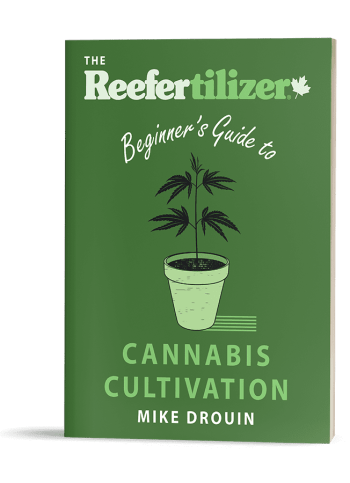Hey there, future hydro-growers! Welcome to the world of hydroponics, the soil-free growing technique where cannabis plants thrive. This age-old method, revitalized by modern technology, allows you to grow your favorite strains with just water, nutrients, and a whole lot of love. Hydroponics isn’t just a science; it’s an art that opens up a new dimension of cultivation with countless benefits. So, let’s embark on this dank journey and discover how you can dive into hydroponic cannabis growing.
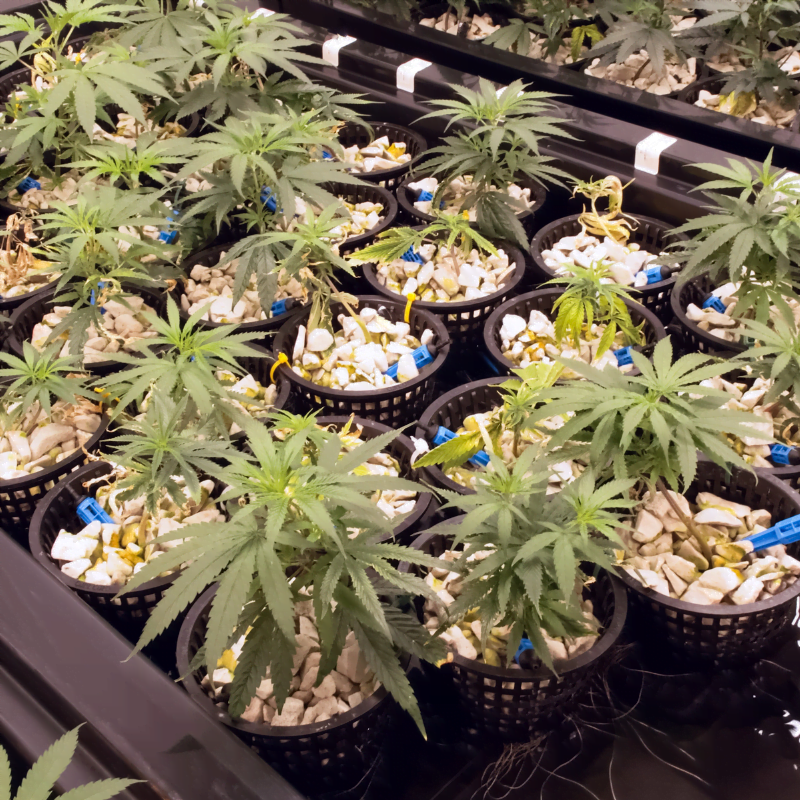
Learn to Grow Better Weed
Download our free guide to growing amazing cannabis at home.
Click Here For More Info
A Brief History of Hydroponics
The story of hydroponics stretches back to the hanging gardens of Babylon and the floating gardens of the Aztecs called chinampas. Fast forward to today, and it’s a cutting-edge method for growing cannabis indoors. By bypassing soil, growers have seized control over the growing environment, leading to some pretty impressive harvests. Now, it’s your turn to be a part of this growing legacy.

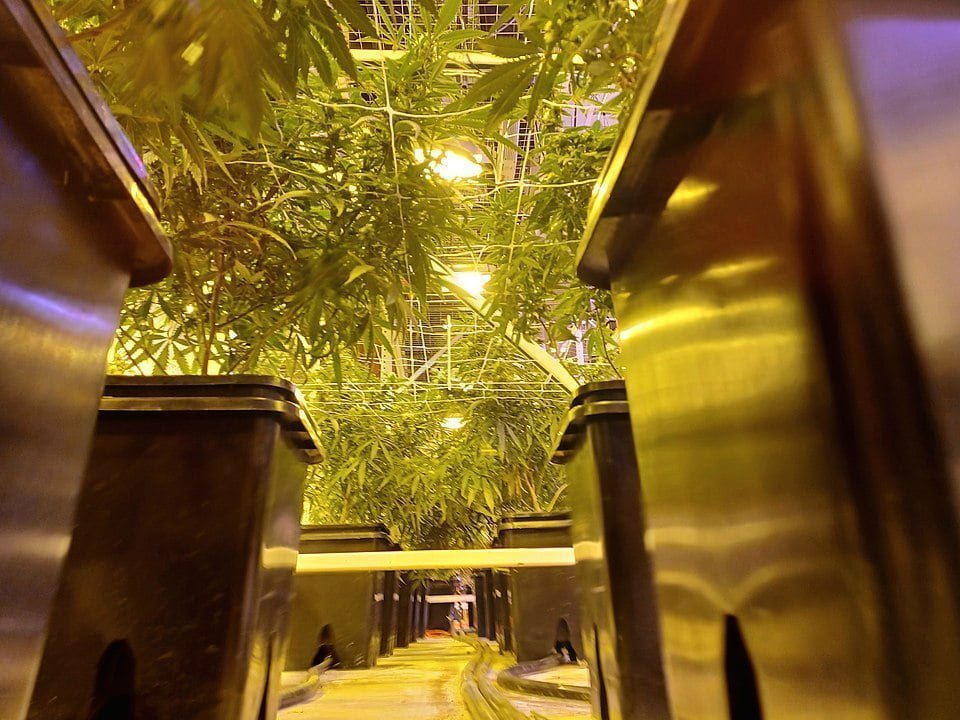
The Advantages of Hydroponic Growing
When you step into the realm of hydroponics, you’re not just growing cannabis; you’re optimizing it. Hydroponic systems offer a buffet of benefits that traditional soil-based methods can’t match. Let’s dive into what makes hydroponics a top choice for cultivators:
- Faster Growth Rates: Your cannabis plants have direct access to nutrients and water, which means they can grow at a turbocharged pace.
- Larger Yields: With nutrients delivered straight to their roots, plants often produce more flowers – and who wouldn’t want more buds?
- Efficient Use of Space: No need for sprawling gardens; hydroponic systems can be set up in compact spaces, making them ideal for indoor growers.
- Control Over the Growing Environment: Hydroponics gives you the power to control every aspect of your plant’s growth, from pH levels to nutrient mixtures.
Embracing hydroponics means embracing control, efficiency, and potentially bountiful harvests. It’s about giving your plants what they need, precisely when they need it.
Simplified Hydro Nutrients
Are you ready to elevate your hydroponic cannabis grow to new heights? With Reefertilizer’s Grow and Bloom hydroponic nutrients, you’re not just feeding your plants; you’re unlocking their full potential. These tailor-made solutions are designed to simplify your grow while maximizing results. Whether you’re just starting out or looking to refine your hydroponic setup, Reefertilizer has got you covered. So why wait? Give your plants the nutrients they crave and watch them flourish!
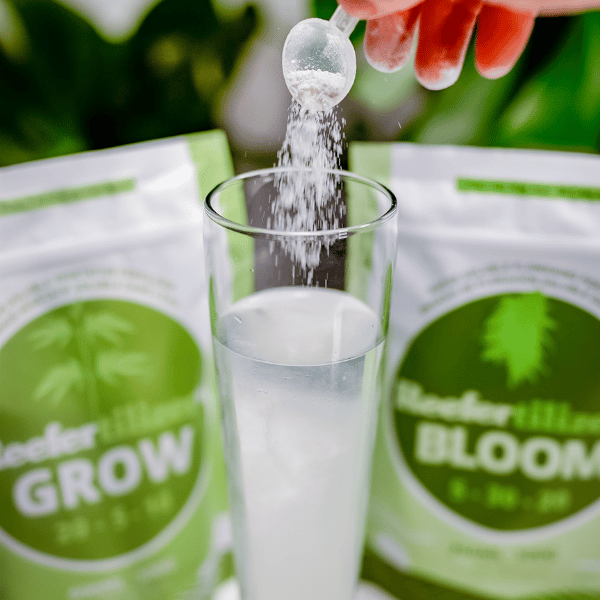
Active vs. Passive Hydroponics
In the hydroponic world, systems are generally split into two categories: active and passive.
Active Hydroponics
Active Hydroponics involve moving parts. Pumps and timers work to circulate nutrient-rich water to your plants, ensuring they receive the perfect amount of food and oxygen. This method is excellent for growers who love precision and are ready to invest a bit more for higher control over their system.
Passive Hydroponics
Passive Hydroponics, on the other hand, are all about simplicity. These systems use no moving parts. Instead, they rely on the capillary action of the growing medium to absorb the nutrient solution and deliver it to the plants. It’s a set-it-and-forget-it approach, ideal for those new to hydroponics or with a preference for low-maintenance gardening.
Understanding the differences between active and passive systems is crucial in choosing the right setup for your needs and ensuring your cannabis plants thrive.
Different Hydroponic Methods For Cannabis
Deep Water Culture (DWC)
Ebb and Flow (Flood and Drain)
Nutrient Film Technique (NFT)
Aquaponics
Aeroponics
The Costs of Hydroponic Growing
Embarking on your hydroponic journey does require some financial planning. Here’s a revised overview of the costs associated with setting up and maintaining a hydroponic cannabis garden, including estimated equipment costs:
- Setup Costs: Depending on the complexity of the system and the size of your grow, initial costs can range from a few hundred dollars to several thousand. For a basic setup, you might spend around $300-$500, while a more advanced setup could cost $700-$1,500 or more.
- Ongoing Expenses: After the initial setup, you’ll need to budget for nutrients, pH testing kits, and electricity. Nutrients can cost around $20-$100 per cycle, and a pH testing kit around $15-$20. Electricity costs will vary based on your local rates and the equipment you’re using.
- Potential Savings: Hydroponics can save you money in the long run due to reduced water usage, no need for soil, and fewer pest problems. Efficient nutrient use also means less waste and more savings.
Remember, these are estimated costs and can vary based on your specific needs and local prices. It’s always a good idea to shop around and look for deals or kits that can save you money on your hydroponic setup.
Materials Needed for Hydroponic Cannabis Cultivation
As you embark on your hydroponic adventure, gathering the right materials is essential. Here’s a checklist to help you get started:
- Hydroponic System: Choose from active or passive systems, such as DWC, NFT, or Ebb and Flow.
- Reservoir: To hold your nutrient solution.
- Grow Lights: For indoor setups, LED or HID lamps are popular choices.
- Growing Medium: Options include rockwool, clay pellets, or peat moss.
- Nutrients: A high-quality hydroponic nutrient solution is crucial for plant health.
- pH Meter: Keeping your nutrient solution at the right pH level is key.
- EC Meter: To measure the nutrient strength of your solution.
- Air Pumps and Stones: For oxygenating your nutrient solution (mainly for active systems).
- Timers: To automate light cycles and nutrient delivery.
- Net Pots and Trays: To hold your plants and allow roots to access the nutrient solution.
- Temperature and Humidity Monitor: To keep your grow environment in the ideal range.
With these materials at hand, you’ll be well-equipped to create an environment where your cannabis plants can flourish.
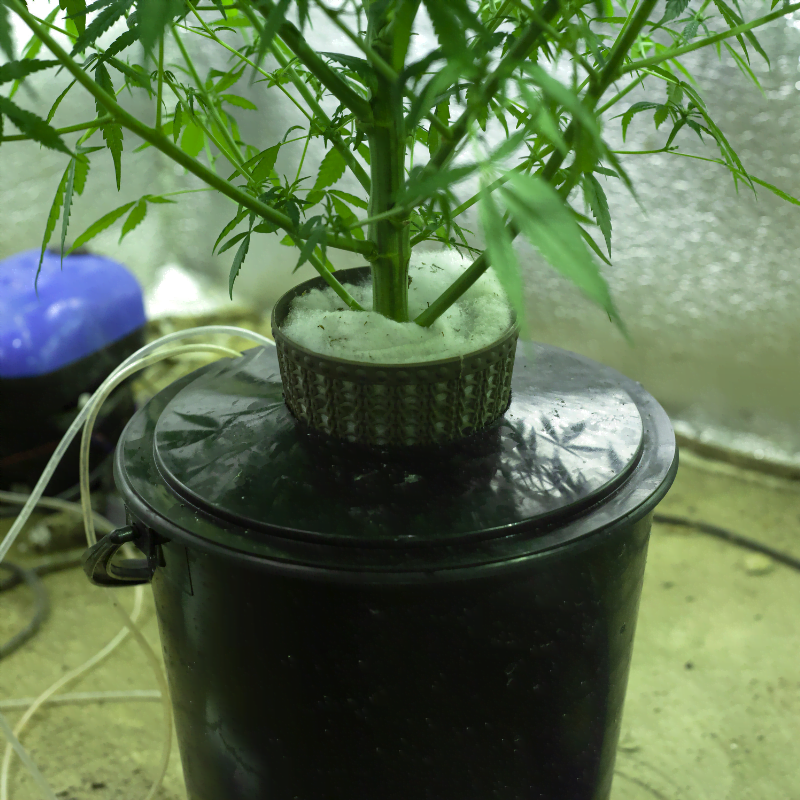
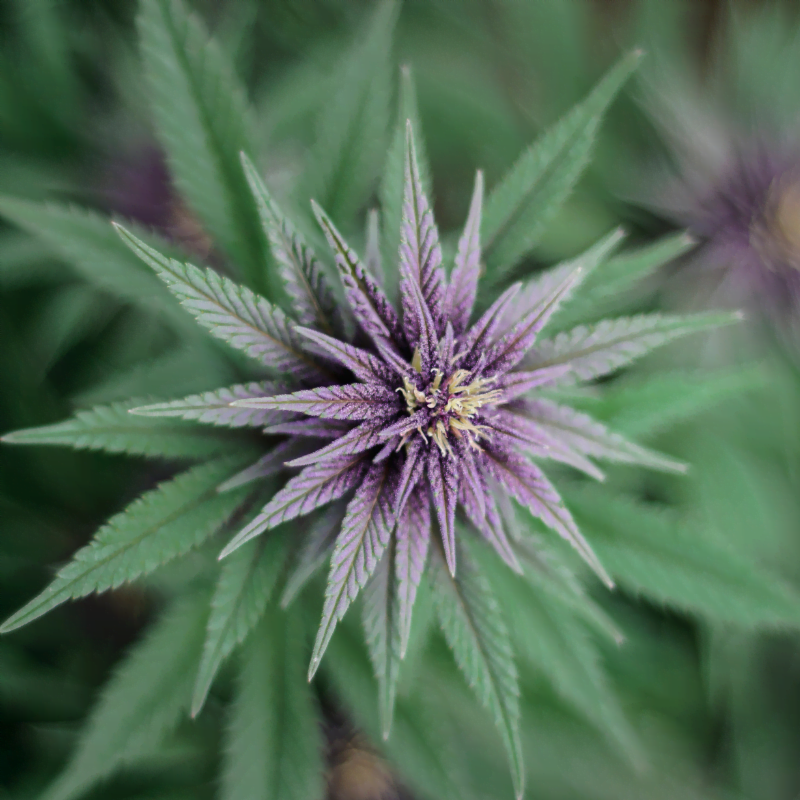
Step-by-Step Guide to Growing Cannabis Hydroponically
Growing cannabis hydroponically might seem like a complex process, but with the right steps, it’s straightforward. Here’s a step-by-step guide to take you from seed to harvest:
- Germination: Start by germinating your seeds. You can use the paper towel method or place them directly into a moist growing medium.
- Seedling Stage: Once your seeds have sprouted, transfer them to net pots with your chosen growing medium.
- Vegetative Stage: Move your young plants to the hydroponic system. Provide 18-24 hours of light daily and introduce them to a nutrient-rich solution.
- Nutrient Solution: Mix your hydroponic nutrients according to the manufacturer’s instructions and monitor pH and EC levels regularly.
- Lighting: Ensure your plants receive the appropriate light spectrum for vegetative growth, typically using metal halide or full-spectrum LED lights.
- Transition to Flowering: Once your plants reach the desired size, switch to a 12/12 light cycle to induce flowering. Change to a bloom nutrient formula and consider using high-pressure sodium lights for better flowering.
- Flowering Stage: Monitor your plants as they develop buds. Maintain optimal conditions in your grow space and adjust nutrients as needed.
- Harvest: When the trichomes on the buds turn milky white or amber, it’s time to harvest. Cut the plants, trim the buds, and dry them in a controlled environment.
- Curing: After drying, cure the buds in airtight containers, opening them periodically to let out moisture and ensure even curing.
Each of these steps is crucial for a successful hydroponic grow, so take your time and pay attention to your plants’ needs. With patience and care, you’ll be rewarded with high-quality cannabis.
Learn More With Reefertilizer
As you become more familiar with the ins and outs of hydroponic growing, you might be looking for ways to refine your technique and increase your yields. For those ready to take their hydroponic cannabis cultivation to the next level, we invite you to explore our comprehensive Reefertilizer guides and articles. From optimizing your nutrient mix to perfecting the grow room environment, we’ve got a wealth of knowledge to help you grow the best hydroponic weed possible.
Troubleshooting Common Hydroponic Issues
Even with meticulous maintenance, hydroponic systems can sometimes face challenges. Here are some common issues and how to troubleshoot them:
- Nutrient Deficiencies: If your plants are showing signs of yellowing or stunted growth, they may be lacking certain nutrients. Adjust your nutrient solution based on the symptoms and ensure proper pH levels for optimal uptake.
- Root Rot: Caused by poor oxygenation or overwatering, root rot can be devastating. Increase aeration with air stones, ensure proper water circulation, and maintain a clean reservoir.
- Pests and Diseases: While less common in hydroponics, pests and diseases can still occur. Use organic pest control methods and keep your grow area clean to prevent infestations.
- Algae Growth: Algae thrive in nutrient-rich, wet environments and can clog your system. Keep light away from your nutrient solution and consider adding a UV sterilizer to your reservoir.
- pH Fluctuations: Fluctuating pH levels can lock out nutrients. Regularly check and adjust your pH, and use a pH buffer to help stabilize the solution.
By staying vigilant and addressing issues promptly, you can keep your hydroponic garden healthy and productive.
Maintaining Your Hydroponic Garden
Maintaining a hydroponic cannabis garden is about consistency and observation. Here are some tips to keep your garden flourishing:
- Monitor Nutrient Solutions: Check the pH and nutrient strength (EC/ppm) daily. Adjust as needed to maintain optimal levels for cannabis growth.
- Change the Water Regularly: Refresh your reservoir with clean water and nutrients every one to two weeks to prevent the buildup of salts and bacteria.
- Keep an Eye on Temperature and Humidity: Use your monitors to ensure your grow space stays within the ideal range for cannabis (typically 70-80°F and 40-60% humidity).
- Prune Your Plants: Regular pruning helps to improve airflow and light penetration, which can lead to bigger yields and healthier plants.
- Pest and Disease Management: Inspect your plants regularly for signs of pests or disease. Hydroponic systems can reduce the risk, but vigilance is key to early detection and treatment.
- Clean Your Equipment: Between grows, thoroughly clean and sterilize your system to prevent any carryover of pathogens or pests.
By following these maintenance tips, you’ll provide a stable environment that encourages robust growth and bountiful harvests.
Conclusion
Congratulations, you’ve journeyed through the essentials of growing cannabis hydroponically! From understanding the history and advantages of hydroponics to setting up your system and maintaining a thriving garden, you’re now equipped with the knowledge to embark on your own hydroponic adventure.
Remember, hydroponic growing offers control, efficiency, and the potential for impressive yields. It’s a soilless path that leads to cleaner roots, purer flavors, and a deeper connection with your plants. So, whether you’re a seasoned grower or just starting out, the world of hydroponics is ripe with opportunity.
Embrace the challenge, enjoy the process, and before you know it, you’ll be harvesting your very own hydroponic cannabis. Happy growing!
If you want to learn even more about growing good cannabis, we offer a free 40+ page guide full of images.
Now available on Amazon.
Sign up for our newsletter and download the digital copy today!
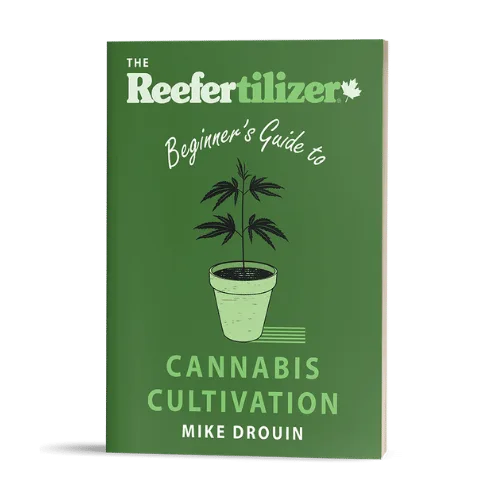
This guide will answer many questions about growing cannabis, like the following...
Selecting Seeds
Identify and Correct Problems
Maximize Yield
Much More...
Get a Chance to INSTANTLY WIN a Reefertilizer Nutrient Kit When You Sign Up.
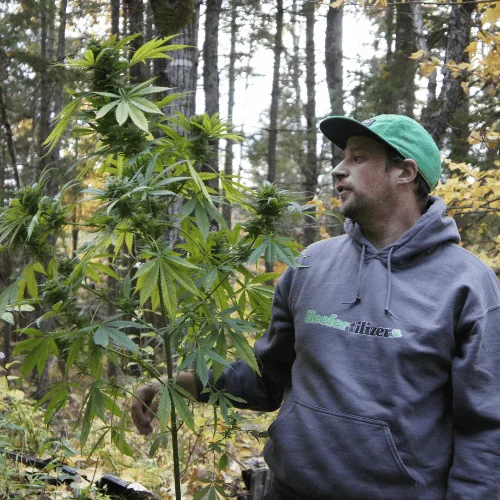
Mike Drouin is the co-founder of Reefertilizer. He’s an experienced craft cannabis grower and a writer of many articles regarding the process. Mike lives on Vancouver Island and enjoys cycling and camping and will sometimes combine the two.

